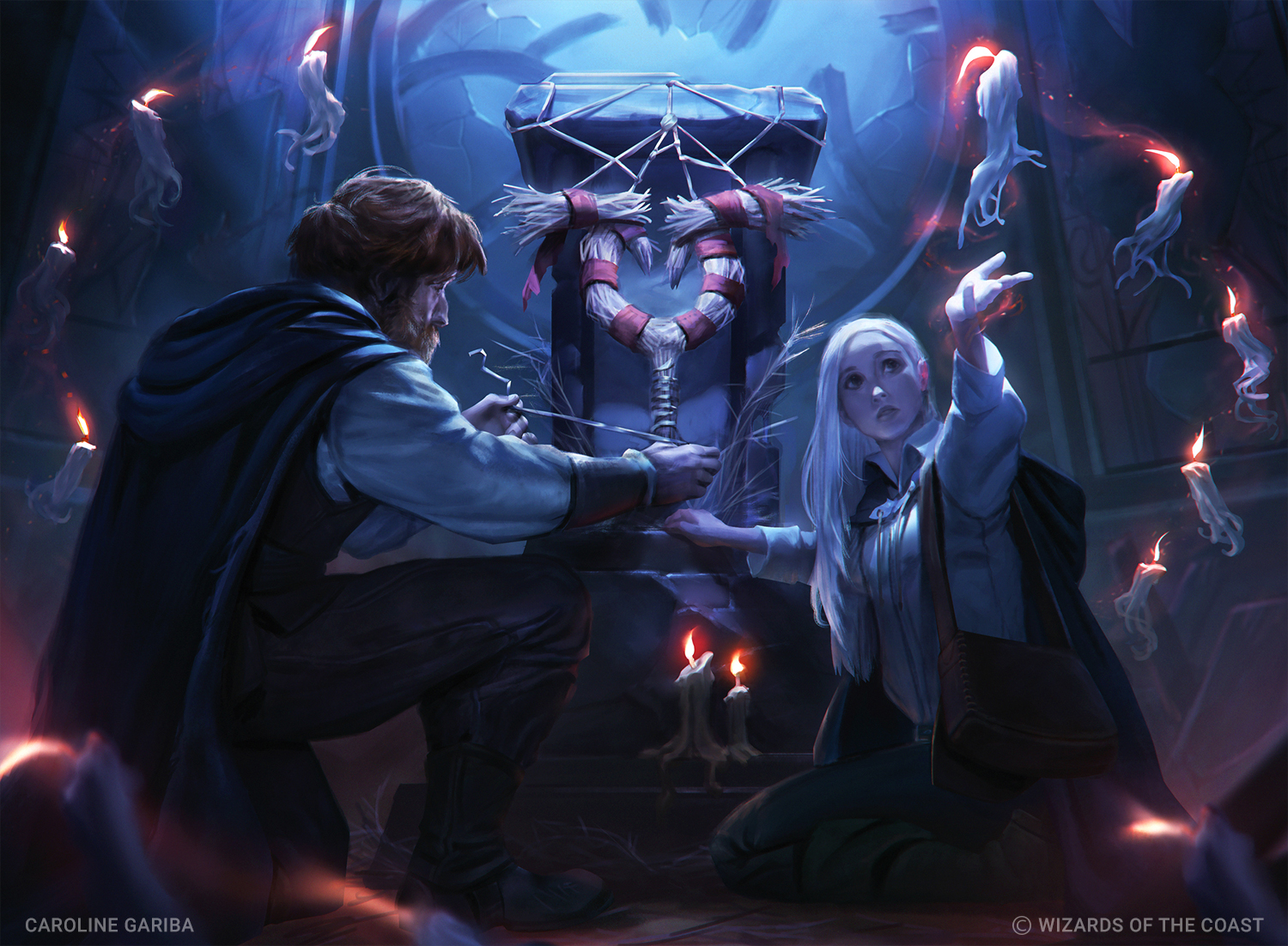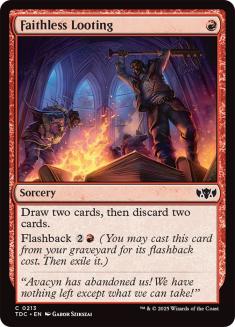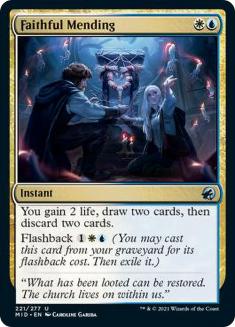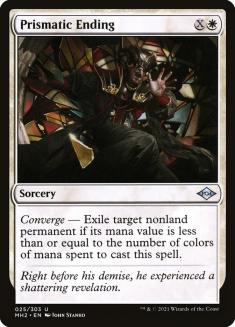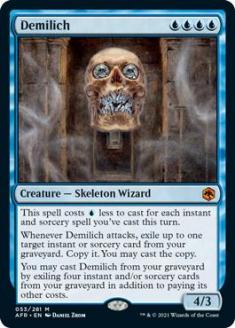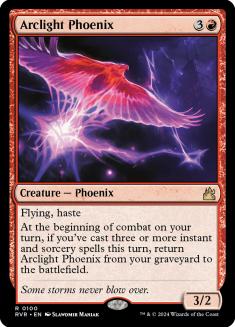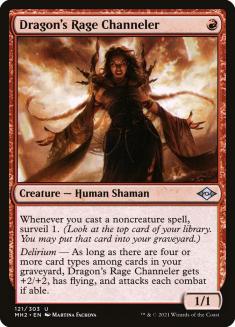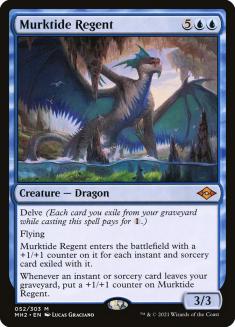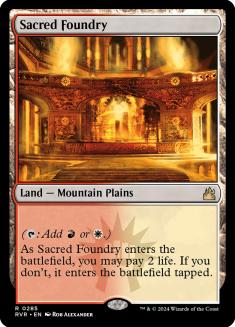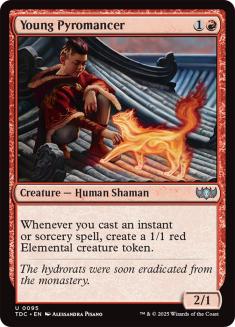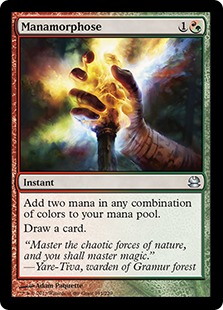I’ve spent countless hours brewing decks with Faithless Looting.
The idea of using your graveyard as a resource isn’t limited to Faithless Looting alone, but it redefined what that meant. Dredge and Izzet Phoenix ran Modern, with Faithless Looting as the glue holding it together. Reanimator, Madness, Vengevine, Hollow One:all strategies reliant on the powerful one-mana enabler and now all forgotten.
When it was banned in Modern, I felt a great loss. I understand that it was powerful, and kept showing up in many of the top decks, but it was the backbone of so many archetypes. When you ban a card that’s integral to the construction of a dozen decks, you’re effectively banning all of those decks. So many archetypes ceased to be when Faithless Looting was banned. Would anything be able to replace the love that we once lost?
The dark days are over.
Where Faithless Looting was destructive to Modern, Faithful Mending will put it back together. Two mana is the sweet spot for a card like this, offering us an enabler that isn’t quite broken, but is certainly good. When I first read this card, I was pretty tilted. It felt like an inside joke at my expense. It costs one more mana than Faithless Looting for what is essentially the same effect. Or is it?
Upon my first reading, I didn’t think instant speed would matter. I also discounted the two life when casting it. I was wrong on both fronts. Faithful Mending is now my pick for best graveyard enabler in Modern, and is making itself known in many different archetypes. It has completely reshaped how I think about graveyard decks, both in absolute and creative terms. Faithful Mending forces us to play a little slower, but we get rewarded for doing it. Where Faithless Looting incentivized going as aggressive as possible, Faithful Mending rewards you for taking your time.
If you’ve ever played with Careful Study or Faithless Looting before, you know how mediocre it can be when you don’t have anything in hand to discard for value. Pitching a few lands or dead cards is fine, but not exactly what you’re signing up for when playing a graveyard deck. At its heart, Faithless Looting is card disadvantage, since you’re spending a card to draw two and discard two, meaning you’re netting -1 card. While Faithful Mending does the same, the two life you gain on casting it can often act as its own card in specific matchups.
Think about it like this: what’s the difference between Lightning Helix and Lightning Strike? Quite a bit.
Faithful Mending: First Look
Faithful Mending is starting to show up all over the place in Modern, and for good reason. With the addition of Persist and Unmarked Grave, Modern Reanimator decks have been looking for something to help get large monsters out of your hand and into the graveyard. Faithful Mending does this fluidly. Not only does it allow you to discard some graveyard centric cards in the early turns, but those few points of life that you gain can make all the difference against an aggro opponent.
Creatures (10)
Planeswalkers (4)
Lands (24)
Spells (22)

The first type of deck I saw playing Faithful Mending was a rough draft of this monstrosity, but Wafo-Tapa has gone a step further and turned it into a control deck. Here Faithful Mending does a lot, enabling Persist but also turning weak or situational cards into something much stronger. Chalice of the Void isn’t exactly playable against Eldrazi, for example, so having a way to get rid of those tech cards is clutch.
You can also hold up Counterspell with the same mana that holds up Faithful Mending, meaning you can interact when you want or cast Faithful Mending when you’re not forced to use your mana playing defense. I don’t want to get bogged down on this list specifically, but this is one of the coolest ways I’ve seen to use Faithful Mending so far, and it reminds me a lot of the old Makeshift Mannequin decks that used to bring back Shriekmaw and Mulldrifter. In that deck, it wasn’t imperative that we discard those creatures, but instead we found other ways to get them into the graveyard.
Evoke on Mulldrifter and Solitude is a fine way to do exactly that, giving Persist many more targets than it might usually have. I love that alternate plan because it allows you to play more like a control deck than a combo deck. A deck that can fluidly move between two different archetypes is harder to pin down than a linear strategy.
When you find a versatile build that’s just as powerful as a combo-oriented version, you limit the impact of opposing interaction. You also shrink the number of cards that dramatically disrupt your plan. Graveyard decks are often soft to Leyline of the Void and Rest in Peace, but they’re also somewhat vulnerable to discard and counterspells. By adding alternate plans involving Mulldrifter and Teferi, Time Raveler, you insulate yourself. By creating those spaces where you aren’t as vulnerable, you open up some of the gameplay that might have been previously unavailable to you.
From the Ashes
There is another deck that puts Faithful Mending to good use, and this one has been buzzing since this past weekend’s events.
Creatures (8)
Lands (17)
Spells (35)
- 4 Lightning Bolt
- 4 Serum Visions
- 4 Manamorphose
- 3 Gut Shot
- 4 Thought Scour
- 4 Prismatic Ending
- 4 Faithless Salvaging
- 4 Consider
- 4 Faithful Mending
Sideboard

Faithful Mending is the glue that holds this deck together. There are a bunch of ways to draw and discard cards for two mana in Modern, but none of them hold a candle to the sheer digging power and repeatable nature of Faithful Mending. Not only do you get the “draw two and discard two” on the front half, but you also have the efficient back half to do it against for only one more mana. The two life you gain at each cast can be the difference in winning or losing the game, and more than makes up for the life lost when adding a color to the deck. It’s also important to note that the flashback doesn’t actually make you lose a card, since it’s being cast from the graveyard.
But enough about Faithful Mending. The card is good. The trick is figuring out when it’s best to cast it, and when you should be patient and hold it for a turn. This deck, much like the old versions of Arclight Phoenix, doesn’t always want you to go off on the second turn. Sometimes you need to play a normal game in the first two or three turns so you can set up a perfect fourth turn that ends with you adding multiple creatures to the battlefield and clearing most of your opponent’s side. Figuring out that turn is the most important part of the whole game for you specifically because missing on your “big” turn usually means you lose. If you don’t discard something juicy to Faithful Mending, chances are you’re not going to be fast enough to get the job done.
Jeskai Phoenix shines in an interactive format. We don’t have disruption, which means any combo deck we face will likely put us in the gutter. Luckily for us Modern is full of interactive strategies at the moment, and even the more “combo-focused” archetypes are heavy on permanents.
This is one of the reasons why we’re playing four copies of Prismatic Ending. A few decks are playing maindeck Chalice of the Void. Having a maindeck answer to cards that are traditionally unbeatable for Izzet Phoenix is a boon. There are few archetypes that completely dodge Prismatic Ending, making it one of the strongest pieces of interaction in Modern. It’s also just a fine removal spell for opposing one- and two-mana creatures, which makes it the ideal pairing for Lightning Bolt in our removal suite.
Red Threat, Blue Threat
The two creatures in our deck are absolute masters at their craft, and should be the only threats you need to consider for your maindeck.
Demilich is as good as, if not better than, Arclight Phoenix in this deck. I would not consider cutting any number and would easily play more than four copies of either if it was allowed. The ease with which you can get a free Demilich from hand or from graveyard is staggering. It requires an exile effect to deal with permanently, but doesn’t have that annoying trait of “drawing a card” when it enters the battlefield. It’s perfectly balanced, as all things should be.
Arclight Phoenix is old hat, but still impressive. Having haste means you can close games quickly. Alongside Demilich, the two are an impressive pair, showcasing aggression and resiliency in the face of removal. That’s one of the reasons Phoenix decks tend to thrive in a world full of Lightning Bolt: they can walk it off. Adding another threat just makes it more likely you lose because your opponent drew a cheap removal spell at a key moment.
I’ve seen a lot of talk about playing Dragon’s Rage Channeler in this deck because of how easily it enables filling your graveyard. In a Mono-Red Phoenix deck trying to trigger prowess, DRC is excellent because you can cast Mishra’s Bauble without issue. That free spell has no downside because it enables prowess and turns on delirium. In the Jeskai version, we aren’t flooding the battlefield with cheap prowess creatures, so a Mishra’s Bauble is no longer free. Because Mishra’s Bauble isn’t free, and doesn’t help turn on Demilich or Arclight Phoenix, playing something like DRC has a lot of downsides.
The other issue is that DRC is great at filling the graveyard, but that’s not something we actually have trouble with. Decks that play Counterspell or other reactive elements often have trouble turning on the graveyard because they don’t want to fill their deck with cantrip effects. This is why Thought Scour is so valuable to them: it aggressively enables Murktide Regent. We could play Murktide Regent, but Demilich fills that role well enough, and it keeps coming back in the face of removal spells. It also can be cast from the graveyard after you mill over it with Thought Scour or Consider. While Murktide Regent is certainly good, it feeds on the same food as Demilich, and the two just aren’t compatible.
Lastly, I want to point out that eight threats might seem like too few, but you churn through your deck a lot. Old versions of Izzet Phoenix played something in between ten or twelve threats, including hits like Crackling Drake and Pyromancer Ascension. Thought Scour, Consider, and Faithful Mending all dig deeply for your eight threats, and those threats are very hard to kill. That means once you draw one or two, you don’t really need to draw more to close the game. Drawing more can lead to bigger landslides, but the reason you increase threat density in a deck is to overcome interaction from the opponent. One or two of these will go a long way, and because you don’t care if you mill them, you’ll effectively “draw” them more often than if you only had cards like Thing in the Ice and Smoldering Egg as your only creatures.
Updates to Jeskai Phoenix
Aspiringspike is a great player with a lot of solid ideas when it comes to building new and interesting decks. He’s been solely responsible for much of the innovation coming out of Modern over the last year or so, and this build of Jeskai Phoenix is his alone. My goal, as always, is to inform and improve when possible. After playing a few Leagues with his initial list, here are some of my thoughts on potential improvements. At the end of this section, I will post my updated list, but I want you to know the “why” before the “what.”
1. Mana Problems
I think seventeen lands is exactly one too few. I had a lot of mana issues when I started playing the deck, often missing the integral third land drop. In addition, I mulliganed a lot of one-land hands, and I’m one of the shadiest one-land keepers alive. I would add another land, and I’m pretty sure it should be a Spirebluff Canal.
I also think Sacred Foundry sucks. Demilich is a little weird on the mana sometimes, and a single land that doesn’t produce blue can throw a wrench in your plans. I think this should be replaced by another copy of Hallowed Fountain. I tried adding a Mountain and had the same issue. You just don’t have enough red cards to justify having a land that can’t cast Consider. It’s too important when you’re doing your chains. I found myself using Sacred Foundry to start every Manamorphose turn, and getting absolutely destroyed a few times when I didn’t. Without Manamorphose, Sacred Foundry is a huge liability.
2. Sideboard Lacking
There has been a drastic reduction in Urza’s Saga, which means we can trim an Alpine Moon. I also don’t think we’re that soft to Urza’s Saga in general because Arclight Pheonix can fly over the Constructs, and we’re maybe a little faster at closing the game. The “tutor” effect from Urza’s Saga also isn’t that problematic because we’re able to get our threats onto the battlefield before they find Soul-Guide Lantern or similar.
Chalice of the Void is “fine” but every one of those Cascade decks has Brazen Borrower. I like Chalice of the Void out of the sideboard if you can cast it for X=1 against Burn, but we’re one of the most vulnerable decks in the world to Chalice of the Void, so I’m off it. I get why it’s there but I think I’d rather play something else. Flusterstorm has been excellent against all of those decks.
Surgical Extraction has been good, but I think I want one or two maindeck, which could open up some more room. It’s so good against Persist and mirrors, as well as a few outliers in the format. Gut Shot has been relatively weak for me, and I think Surgical Extraction could be “it.”
3. Dodging Hate
Both Arclight Phoenix and Demilich are excellent threats, but they’re vulnerable to the same stuff. Endurance is a huge problem, and sometimes things like Leyline of the Void are insurmountable. Prismatic Ending can only go so far, so I think we need a threat in the sideboard to give us some help.
I’m a big fan of Young Pyromancer, but virtually any threat could do the trick. Monastery Mentor or maybe even Saheeli, Sublime Artificer could get the job done. Whatever you choose, just make sure it doesn’t end up using the graveyard at all. The entire point is to have a threat that can win the game in the face of intense graveyard disruption. I’m currently leaning Young Pyromancer just because it costs so little, but something like Thing in the Ice could be good as well.
Here is my current list of Jeskai Phoenix.
Creatures (8)
Lands (18)
Spells (34)

I’ve been a huge fan of Narset, Parter of Veils out of the sideboard in the past because it helps so much in the mirror. While the deck isn’t all over the place yet, people love some Arclight Phoenix, and I expect this deck to pick up in popularity soon. It’s also quite good against most of the blue decks running around that aren’t playing DRC.
Overall, I feel like this deck has some minor hiccups, but is already showing success. I love me some Arclight Phoenix, so I’ll be working on the deck for the next week or two trying to make it as smooth as possible. Demilich is one of the easiest additions to the deck I’ve ever seen, and I honestly think the deck would be outrageous if Faithless Looting were still legal. I love how balanced Demilich is in regards to inevitability but also not overwhelming. It sits right in the sweet spot between “very good” and “broken.” I’m looking forward to playing more with it so I can learn all the little tricks of making it cost cheaper, when to discard it versus when to hold and cast it, as well as finding any and all free spells to help cast it faster.
I’ll leave you with one last nugget of wisdom: be careful with Manamorphose. For the most part, Manamorphose should be making UR, but that changes based on your hand. Sometimes you’ll need UU to cast two cantrip effects or to make casting Demilich possible. At other times, you’ll need to preemptively float mana in the hopes that you’ll draw something off the top of the deck. My recommendation is to essentially never make red mana unless you know what’s coming. It only really casts Lightning Bolt, and is one of the reasons why I ended up cutting Sacred Foundry altogether. It changes considerably based on your hand and sequencing, but just know that Manamorphose is no longer automatic, and you need to be careful in how you sequence it lest you find yourself with an unplayable Demilich or two.
If you like Arclight Phoenix, give this deck a try. You won’t be disappointed.

